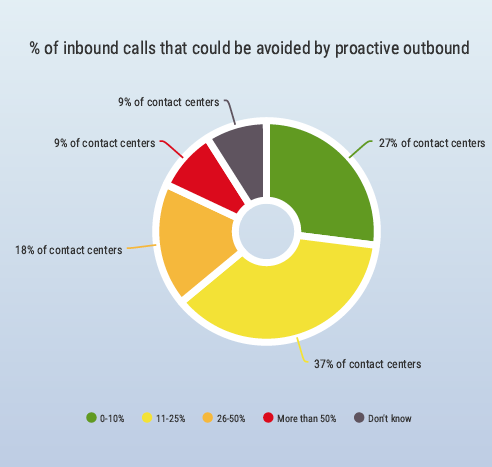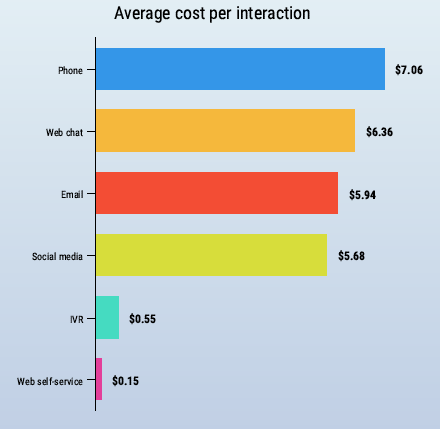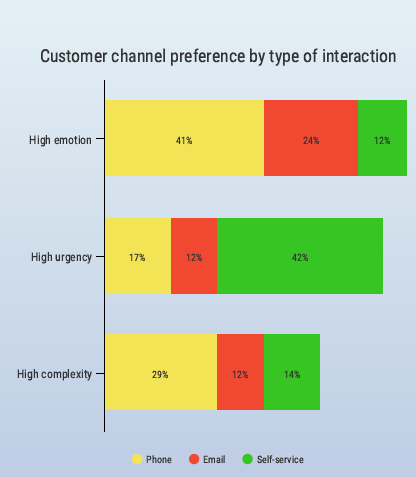The pandemic taught us the blunt lesson that we can't predict every crisis that will negatively impact ourselves, our businesses, and our customers. The coronavirus hit fast and hard and many organizations were not ready for the sheer breadth of the ramifications. Hopefully, businesses have learned a second lesson from this pandemic—that although you can't foresee or control every crisis, you can control how ready you are to deal with the unexpected.
The need for contact centers to adapt to unexpected events is not unusual but it can be challenging, especially if you don’t have the right tools to help you adjust quickly. To ensure minimal impact, you need to be able to do more than just reforecast volume, tweak agent schedules, take a hit on service levels, and drive on.
These unanticipated events can be big or small, positive or negative. You might have to deal with a local power outage that is affecting your customers and preventing remote agents from logging in. Or a positive media story that causes your call volumes to surge. Or a world-wide crisis that impacts every aspect of your customers’ lives and your business.
Regardless of the type of event, your customers are going to turn to your contact center to help them. They might contact you to:
- Find out what they need to do and determine if they are impacted
- Clarify process changes or get information about new processes
- Make new purchases
- Cancel services to save money
- Navigate healthcare issues
Agile contact centers realize that just tweaking schedules isn't sufficient for addressing this crisis and bad service levels can no longer be explained away. They have weapons in their arsenals to address fluctuating customer needs, help agents successfully react to surging volume, and preserve the customer experience. This includes self-service tools, digital channels, proactive customer service methods, and more. Having these capabilities in place gives savvy contact centers the ability to quickly deploy whichever set of tools is appropriate for a given crisis.
Author and motivational speaker Zig Ziglar once said, "Success occurs when opportunity meets preparation.” Organizations that are prepared for the unexpected can effectively support their customers and turn a crisis into an opportunity to delight customers and strengthen relationships.
Let's take a closer look at three disruptive events and real-life examples of how organizations successfully responded to them.
Scenario 1: Protecting customers during process changes
Serious crises may require people to change their behavior or follow new or updated rules or processes. Just think about how the pandemic has caused us to wear masks, social distance, avoid large crowds, and so much more.
In general, people don't really like change, especially if it's forced upon them. Does anyone really like dealing with toilet paper shortages or lock down mandates? Unexpected changes can leave people feeling frustrated and confused. These types of changes can make people feel like they've lost control and are particularly stressful when they prevent people from taking care of their families.
Organizations need to be sensitive to how their customers or citizens react to change and implement measures to proactively communicate and help people through the change process. For example, businesses can push out informative messages with an outbound dialer, send email updates, and add messaging to the IVR. Not only is this a customer-focused approach, but it will also curtail inbound contacts.
In 2019, the State of Michigan Department of Health and Human Services (DHHS) put these concepts into practice using NICE CXone. Government shutdowns can also be traumatic events, especially to citizens who rely on government assistance. In January 2019, the US was in the midst of one of the longest Federal government shutdowns on record. The Michigan DHHS was expecting higher call volume when it announced food benefits would be paid early. As Adam Yusko, Application Development Associate Manager, said, "[O]ur call volume immediately went through the roof!”
Fortunately, Michigan DHHS had several measures in their toolkit to address the volume spike, including opening more ports, putting more agents on the phones, and placing proactive messaging on the IVR to answer callers' questions. These measures gave the contact center more capacity and also reduced the need for agent assistance.
As the saying goes, when it rains, it pours. Well in Michigan DHHS’ case, it wasn’t heavy precipitation but an extreme cold snap that compounded their challenge just a couple of weeks later.
Vulnerable citizens were now in danger of having their heat turned off and turned to the state for assistance. Once again, Michigan DHHS was tasked with providing agile customer service in the face of adversity. “We needed to give citizens priority access to caseworkers for state emergency relief to keep their heat and electricity on,” Mr. Yusko explained. “One of the things we were able to do with NICE was set up special transfers outside core business hours. If people called in right before or after those hours, they were routed directly to county offices for assistance.”
Michigan DHHS demonstrates that being able to quickly adapt and flip the switch on the right tools is an essential element to protecting and serving customers in challenging times.
Scenario 2: Handling traffic spikes with the staff you have
When volume spikes, a normal reaction is to add more agents. This can be the right response in certain circumstances, but a sudden business disruption usually doesn't give contact centers enough time to recruit and train additional agents. Plus, existing agents may be more unreliable due to impacts of the crisis. For example, have you seen an increase in agent absenteeism related to issues like homeschooling children or needing to quarantine due to possible exposure?
Part of "preparing for the unexpected" should include plans to reduce agent-assisted contacts, divert customers to digital channels that don't require real-time interaction and cost less, or change call patterns. For example, contact centers can:
- Implement self-service options to deflect agent-assisted interactions.
- Encourage customers to use digital channels like email, which agents can respond to after hours.
- Offer queued callers the option to have an agent call them back, which could be done when inbound call volume slows.
All of these options should be part of a contact center's emergency response toolkit. But, really, organizations don't need to wait for a crisis to use them. As Valvoline discovered, these types of measures, which allow businesses to do more with existing agent pools, can also be smart additions to service models during normal times.
Valvoline undertook an initiative to centralize the handling of calls that were being answered in their dispersed service centers. They were concerned that callers weren't receiving a consistent experience and that employees were being interrupted from service activities to answer phone calls. Sending those calls to its existing contact center would alleviate both issues and leverage existing customer service capabilities.
The solution they implemented had an IVR self-service component designed to answer frequently asked questions. This measure allowed the contact center to efficiently absorb the extra call volume. Joseph Patrick, System Administrator for the Valvoline Support Center, reports, "By using the CXone IVR to create self-service options that answer callers’ most common questions, we reduced queue times by 10 seconds, improved agent utilization and decreased handle time.” Additionally, “We also eliminated tens of thousands of live agent interactions each month. So even when our call volumes substantially increased, we didn’t need to increase our headcount.”
Valvoline's experience is solid proof that thoughtful use of contact center technology can expand capacity without increasing agent headcount. When unexpected events happen, these types of flexible solutions can help ensure organizations can continue to effectively serve customers in need even if demand is higher.
Scenario 3: Dealing with demand during disasters
When disaster strikes, contact centers need to be able to quickly pivot. Agility is key for business continuity, so organizations need technology that is flexible and simple to configure. This means, for example, that contact center administrators can easily implement special IVR messages or temporarily change call routing without vendor assistance.
Additionally, organizations need contact center software that supports multiple proactive customer service methods and makes digital channel implementation fast and simple. Providing customers with channel options, rather than restricting them to phone-only service, provides them with convenience and can ease stress. And the proactive customer service provided by tools like outbound dialers and IVR messages can inform people about the current situation and the steps they can take to mitigate the impact of the disaster.
Agile software can make organizations more resilient and allow them to continue serving customers in the wake of disasters. That’s exactly what 211 LA understood and why they implemented a contact center platform that would allow them to provide uninterrupted service to disaster-impacted residents.
211 LA connects Los Angeles County residents with community organizations that provide health, human, and social services. Their mission makes business continuity imperative, especially in times of crisis when people need them the most. Amy Latzer, Chief Operating Officer of 211 LA, elaborated, "When disasters or emergencies occur, we have a very short time to respond. We have to turn on a dime, and we value the ability to quickly update messages in the IVR, activate a different option on the phone menu, or modify call routing in minutes. The ability to make these changes ourselves is very important so we can give callers the appropriate information during a disaster.”
Their previous, on-premises contact center solution didn't provide this level of flexibility, but they found it when they upgraded to NICE CXone. The same technology that provides agility during emergencies also enhances day-to-day services. Ms. Latzer explains, “Customers can chat with us on our website or use click-to-call. With click-to-call, they just enter their information on our website, tell us what they need help with, and then we call them to discuss their needs.” They also use text messaging for their peer-to-peer veterans’ services.
By embracing the robust capabilities provided by a modern contact center platform, 211 LA has positioned itself to be agile in times of crisis and presents a business resiliency model worthy of emulation.
Conclusion
Sometimes we can foresee disruptive events, but often they are unpredictable. The COVID-19 pandemic has reinforced the importance of having the right technology in place so that even if organizations can't predict every possible disaster, they can still plan for unexpected changes so you can quickly react with agility.
For contact centers, this means having a robust, unified cloud-based platform that protects your ability to deliver exceptional customer service even in times of crisis. A platform that provides:
- Outbound dialers so you can proactively send out messages, emails, and text messages to keep customers informed and reduce your inbound volumes
- Self-service functionality, such as IVR and call back abilities, that are easy to configure and update.
- Digital channels, including email and chatbots, that can be implemented quickly so you can alleviate the requirement for live agent interactions.
NICE CXone includes all these capabilities and more. CXone has helped clients worldwide weather the coronavirus storm. Our cloud-based platform makes shifting to a remote agent model fast and simple and the wide breadth of functionality gives organizations flexibility with how they react to unexpected events.
For more ideas about how to react effectively and efficiently to volume surges, download our complimentary eBook, 5 Ways to Manage Demand Swings in Challenging Times.








